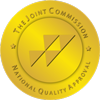Treatment of Borderline Personality Disorder and Addiction
Borderline personality disorder or BPD is a mental health disorder. People with BPD suffer from a distorted self-image and have a difficult time keeping relationships. But the treatment of borderline personality disorder can help them live healthy and high functioning lives.
What is Borderline Personality Disorder?
BPD is defined by the ongoing pattern of varying moods, self-image, and behaviors. The symptoms of BPD may have intense moments of anger, depression, and anxiety. These moments can last from hours to days.
Individuals with BPD were once believed to be on the verge of psychosis. Two percent of adults suffer the emotional rollercoaster of BPD. They exhibit high rates of self-harm and suicide attempts. The risk of suicide is higher in young adults. BPD is more common in women than men, with 75% of cases being in women. Treatment of borderline personality disorder can be extensive, with 20% of psychiatric hospitalizations being for BPD.
Is Borderline Personality Disorder Treatable?
In the past, professionals had a hard time treating BPD. Many doctors thought it was untreatable. But, we know that is not true. The treatment of BPD now has better long-term results than depression and bipolar disorder.
Effective treatment of borderline personality disorder will break negative thoughts, feelings, and behavior patterns. It is not easy to change old habits. But with time, positive new habits become natural, and people can find emotional balance.
Thoughts and Feelings of Borderline Personality Disorder
Recognizing BPD in yourself can be difficult. And when a person feels like life is spinning out of control, they look for any answer. The following statements can help a person recognize the possibility of BPD.
- Most of the time, I feel empty.
- My emotions change quickly.
- I always wonder if loved ones will leave me.
- When I feel insecure in my relationship, I manipulate my partner.
- My relationships are intense but chaotic.
- The way I think about people can change instantly for no reason.
- I have hurt myself or threatened suicide.
- I do dangerous and risky things such as drinking alcohol, using drugs, and having unsafe sex.
If someone identifies with these statements, they may suffer from BPD. But, BPD can be easily confused with other mental health disorders. So only a mental health professional can make an official diagnosis. Tracking the signs and symptoms can help the diagnosis and treatment of borderline personality disorder.
Signs and Symptoms of Borderline Personality Disorder
A combination of symptoms helps diagnose borderline personality disorder. The symptoms are grouped into nine major categories. Individuals must show at least five signs, and the symptoms must have impacted their lives since adolescence.
9 Symptoms of Borderline Personality Disorder
- Abandonment fears. Individuals with BPD are afraid of being left alone or abandoned. A partner coming home late can cause intense worries. People with BPD may be clingy, start fights, and even stop someone from leaving. But this only drives people away.
- Unstable relationships. People with BPD have relationships that are intense and chaotic. They fall in love quickly, but the relationship is short-lived. BPD also affects relationships with friends and family. The emotional swings of an intense desire to intense anger push loved ones away.
- Distorted self-image. A person with BPD typically has an unstable view of themself. One moment they may like themself and the next they hate themself. They continuously change jobs, lovers, religion, and even sexual identity.
- Impulsive behaviors. BPD can make people do risky things. Risky actions can include binge eating, shoplifting, speeding, and using drugs and alcohol. The angrier a person is, the more dangerous the behavior.
- Self-harm. Thoughts and actions of suicide and self-harm are common with BPD. Self-harm is hurting oneself without wanting to commit suicide. Cutting and burning are common forms of self-harm.
- Unstable emotions. Extreme emotional swings are typical with BPD. The mood swings can be intense, but they pass quickly. Unlike depression and bipolar disorder, which lasts for days and months.
- Feeling empty. People describe the feeling of emptiness as a hole or a void inside them. This emptiness makes a person feel like a nobody. The use of drugs and alcohol are common when trying to fill the void.
- Uncontrollable anger. People with BPD tend to have explosive anger and short tempers. People can lose control and throw things, yell, and be consumed with rage. A lot of the violence is directed toward themselves.
- Out of touch with reality. Paranoia and suspicion is a common struggle with BPD. They think others are out to get them. Dissociation is losing touch with reality. People may feel spaced out, foggy, and outside of their bodies.
What Causes Borderline Personality Disorder
The origins of borderline personality disorder are still not known. The Mayo Clinic describes some theories behind the source as:
- A dysfunctional home environment. When children grow up feeling neglected emotionally or feel abandoned, they are at increased risk of BPD. Physical and sexual trauma can also be a factor.
- Family history. Some individuals may be predisposed to developing BPD, especially if parents and siblings are diagnosed with BPD.
- Neurological issues. Other neurological problems could cause the unstable and unpredictable behaviors of BPD. A person may have an abnormality in the part of the brain that controls emotions and behaviors.
- Brain chemistry. Imbalances in neurotransmitters may be linked to BPD. Chemicals such as serotonin control emotions and behaviors. Those with BPD may not process these chemicals correctly.
Some of the above factors of BPD are also factors of substance use and addiction. Typically people that struggle with addiction grow up in an environment with substance use. Children that experience physical and sexual abuse often use drugs and alcohol to cope.
How Does Borderline Personality Disorder and Addiction Interact?
A dual diagnosis of addiction and borderline personality disorder is not uncommon. But, treatment can be challenging. The manipulative behaviors and anti-social tendencies of BPD can make individuals hard to treat. The fact that many signs of addiction are similar to BPD can make treatment difficult.
Common factors of addiction and borderline personality disorder include:
- Instability with jobs, relationships, and finances
- Manipulative
- Risky behaviors
- Self-destructive behaviors
- Intense mood swings
Depression, mood swings, paranoia, and suicidal tendencies are all signs of addiction. This adds to the challenge of treating those with a dual diagnosis. A treatment center that only treats addiction will not be beneficial in the treatment of borderline personality disorder. To successfully treat both addiction and BPD, a treatment center must be experienced in mental health disorders as well.
Treatment of Borderline Personality Disorder and Addiction
Treatment of borderline personality disorder and addiction simultaneously is possible in the right treatment center. Centers like Sana Lake offer psychotherapy and substance use disorder treatment. Therapies such as cognitive-behavioral therapy help individuals identify the thoughts that lead to risky behaviors. They also learn to manage their emotions without turning to drugs and alcohol.
The Importance of a Therapist
A therapist plays a huge roll in the success of treatment. Therapy sessions provide a safe place to work through past and present traumas and issues of BPD and addiction. If a person is not comfortable with a therapist, it is not impolite to ask for a different one.
Certified professional therapists will be knowledgeable in treating both BPD and addiction. Many therapies, like dialectical behavior therapy and schema therapy, help address the dual diagnosis. But, a good therapist will understand that treatment plans can change to accommodate the person.
A therapist that is a good fit will make a person feel safe, accepted, and understood. But remember, the best therapist can’t make a person better. Individuals have to be committed to helping themselves. BPD’s delusional thoughts can make a person think highly of their therapist one minute, and the next feel like the therapist has nothing to offer. Stay committed and trust the therapist, and individuals can control symptoms of BPD and recover from addiction.
3 Self-Help Tips for Treatment of Borderline Personality Disorder
When individuals are committed to improving their lives, they know treatment doesn’t end when a therapy session ends. They always have to be aware of their thoughts and emotions. With awareness, individuals can stop the downward spiral before it begins. Three self-help tips include:
Calm the storm.
People with BPD spend a lot of time-fighting their emotions and impulses. Acceptance of these issues can be difficult after fighting against them for so long. But acceptance does not mean approval. It means an individual is no longer fighting against their feelings. Acceptance of the issues of BPD takes away the power of the problem. Being mindful allows a person to experience their thoughts and feelings without judgment.
Sensory-based stimulation is an excellent way to calm the storm. A person should try different things for different moods. What works when a person is mad may not work when they are depressed. Some ideas include:
- Touch. Putting a hand under warm or cold water, or holding a piece of ice can help when a person feels “nothing.”
- Taste. Eating something strong like mints or salt and vinegar chips can help when a person feels numb. While tea or soup can soothe when feeling stressed.
- Smell. The smell of flowers or candles can be relaxing, while citrus smells can snap a person back to reality.
- Sight. Look at something that makes you smile. A favorite painting, a bunch of flowers, or a pet can all be soothing when feeling strung-out.
- Sound. Loud music can be helpful when a person feels angry. Dance it out, let the anger go. Sound machines are useful for calming a person down.
Control and tolerate.
A common symptom of BPD is being overwhelmed by feelings. To cope with these feelings, many people turn to drugs and alcohol or other reckless behaviors. People may feel they do not have a choice but to turn to harmful substances.
Instead of running to drugs and alcohol, a person needs to ground themself. Grounding is a quick and easy way to stop impulsive behaviors. Take a few minutes and do these three things to ground yourself.
- Find a quiet spot.
- Focus on what you are experiencing.
- Concentrate on breathing.
Improve interpersonal skills.
Individuals with borderline personality disorder struggle with healthy and lasting relationships. BPD makes it difficult for a person to see the other person’s view. They misread others’ feelings and overlook how their actions affect others. When people start accepting their part in the problem and not blame others, they can begin to build healthy relationships and social skills.
Treatment at Sana Lake Recovery Center
If you or a loved one suffers from borderline personality disorder or addiction, the certified professionals at Sana Lake Recovery Center can help. Contact us today and get started on your path to a better life.



